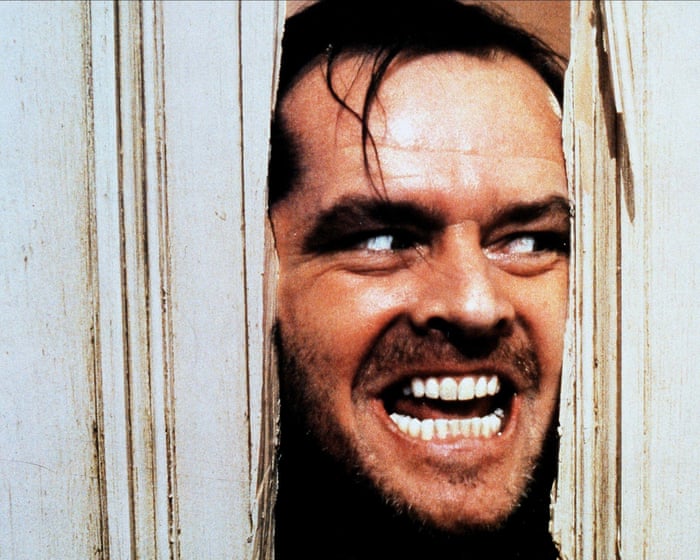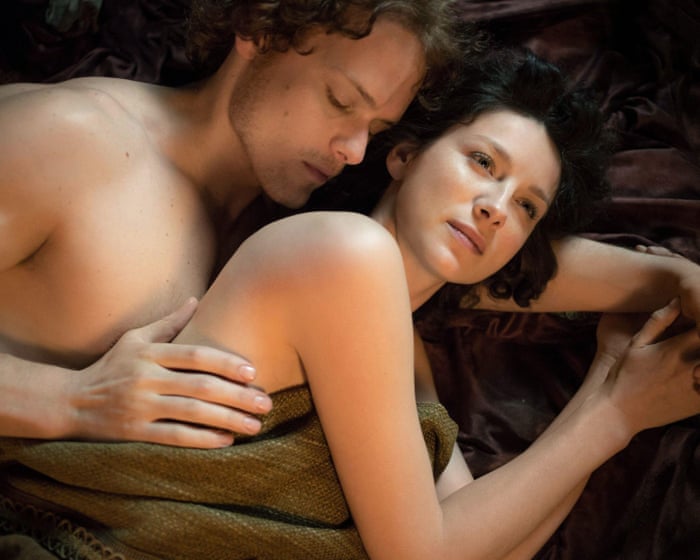The Innocents
“Sometimes one can’t help… imagining things.” Truman Capote assisted in adapting Henry James’s ghost story, The Turn of the Screw, into the 1961 film The Innocents, directed by Jack Clayton. It remains one of the most unsettling horror movies ever made. Just a glimpse of Deborah Kerr’s sweating face or trembling hands brings back that gut-wrenching fear. She portrays a governess caring for two traumatized children in a remote estate where life feels fragile—rose petals fall, mysterious figures appear on the grounds, and eerie screeches pierce the night. Freddie Francis’s shadowy black-and-white cinematography, filled with flickering candles, sets a haunting mood, but it’s the soundtrack with Daphne Oram’s uncanny electronic noises that truly gets under your skin. Kerr’s character, Miss Giddens, quickly unravels, doubting her own terrifying visions and suspecting the children are possessed by evil spirits. “Oh, look, a lovely spider!” exclaims sweet little Flora. “And it’s eating a butterfly.” — Pamela Hutchinson
Paranormal Activity
It’s easy to view Paranormal Activity as a relic from 15 years ago, a franchise that revived the found-footage horror genre a decade after The Blair Witch Project, spawning six sequels and many less effective imitations. Yet, when I recall the most intense scares I’ve had in a theater, Paranormal Activity stands out. Released widely in 2009 after a festival debut two years prior, it didn’t have the same buzz as Blair Witch, where some mistook the fake footage for real. Instead, it updated the style for an era when home cameras were everywhere, giving its surveillance-style scenes a disturbing realism that avoided the “why are they still filming?” criticism. The film’s brilliance lies in how it creates dread from minimal elements, making viewers scrutinize seemingly mundane shots of people sleeping for subtle signs of supernatural—or demonic—activity. For much of its runtime, I felt an unexpected knot in my stomach, proving that less can be far more frightening. Possession films like The Exorcist never really got to me, but Paranormal Activity’s amateur investigation of bumps in the night did, and it stuck with me. — Jesse Hassenger
Ringu
I don’t remember much about my first time watching Ringu, except that I had to move to the cinema floor to put more distance between me and the screen. Since university, I’ve seen a lot of horror, but rewatching it shows why it gave me such extreme chills. Hideo Nakata’s hit about a cursed videotape that gives you a week to live after viewing has a slow, cold, and crisply alien feel, with growling sound design, blurred photos, angular overhead shots, a small boy, and endless dripping silence—until a massive ghost lady climbs out of the TV to scare you to death. There’s also the scene with the well, which I can’t describe without trembling. The part about “brine” and “goblins” hasn’t aged well, especially if you’ve read a lot of Mr. Gum, but Ringu remains top-tier unsettling and scary. By the way, I watched it again on Tuesday, October 28, at 4:23 pm, just in case, for reference. — Catherine Shoard
From Hell
The Hughes Brothers’ grim retelling of the Jack the Ripper murders is filled with shadowy corners, jump scares, and an unidentified villain who preys on his victims—in this case, sex workers in Whitechapel.Dressed in a black cloak and top hat, the film uses sepia tones and impressive production design to depict the grim poverty of 1880s East London. It balances campiness—like Heather Graham’s attempt at a Cockney accent—with genuine terror. The women, regularly abused by clients and pimps, could easily know the killer hunting them. Much of the threat comes from how the Ripper lures them to their deaths; in one instance, his henchman offers an unsuspecting victim grapes and a carriage ride to meet his boss, posing as a client. Johnny Depp’s tormented inspector is a more disheveled and weary version of his Ichabod Crane character from Tim Burton’s “Sleepy Hollow,” released two years earlier. In “From Hell,” he consistently trails the infamous murderer, who was never caught after his gruesome, anatomically precise killings. — Shrai Popat
The Strangers
A few years ago, my best friend and I stayed at a cabin in the woods in rural North Carolina. Everything was perfect until her phone vanished. She insisted it had been on the coffee table, but it was gone, and calls went straight to voicemail. The house fell eerily silent. Within minutes, we were huddled on the couch, overwhelmed by a deep dread I’ve never felt before or since. We were convinced we were about to die. Our rapid descent from “maybe you dropped it outside” to “axe murderer incoming” was fueled by “The Strangers,” Bryan Bertino’s brutally frightening film starring Liv Tyler and Scott Speedman as a couple on a nightmare cabin getaway. I watched it only once after its 2008 release and never will again. With its ruthless simplicity and some of the creepiest masks ever, Bertino tapped into a raw paranoia that still lingers in me: you’re never safe, evil strangers could be anywhere, and torture needs no reason other than “because you were home.” And, crucially, a missing phone means you’re doomed. — Adrian Horton
Midsommar
“Midsommar” isn’t scary in the traditional sense with jump scares or slow-building tension, though it has elements of both. Instead, it delves into the terrifying journey of coping with a loss too immense for the human mind to handle. Young adult Dani falls into deep depression after her sister Terri kills herself and their parents with carbon monoxide, leaving Dani orphaned in a matter of hours. Stuck with an unsupportive boyfriend, she finds comfort in a strange, cult-like community in rural Sweden. Director Ari Aster skillfully creates horrifying scenes of grief and loss, exploring the foggy state of those trying to find stability after tragedy. The film is frightening because it confronts a part of life society often avoids, showing how quickly anyone can become lost, desperate, and in need of help. Aster makes us feel the process of letting go of a cherished past stolen by tragedy while cautiously embracing a new life. In doing so, he explores the dark, untamable corners of the human psyche that shape our existence. — Veronica Esposito
The Shining
“The Shining” has one of the lowest body counts for a horror movie—just two. And we…We are well past the two-hour mark when the film delivers its only fatal blow against Scatman Crothers’ character, Dick Hallorann, the cook at the Overlook Hotel—who notably is also the only Black character. That’s it. There is no slasher and very few jump scares, just a sinister history of violence haunting a hotel built on Indigenous burial grounds, and Stanley Kubrick’s masterful control over our nerves, holding us captive with every flowing tracking shot, ominous framing, and jarring edit. I’ve lost count of how many times I’ve watched and rewatched The Shining, following Jack Nicholson’s recovering alcoholic father as he and his vulnerable family circle endlessly through the Overlook’s infinite corridors. I find myself obsessing over the symmetrical patterns on the walls and carpets, searching for meaning, trying in vain to make sense of a movie that denies comprehension, satisfaction, closure, or escape. The Shining is one of, if not the, scariest movies of all time because the fear never fades, no matter how often we return to it—as if we, too, are trapped in the Overlook. “Forever and ever,” as those eerie twins say.
I understand why many might prefer something more grounded in reality, but while watching John Carpenter’s majestically disgusting sci-fi nightmare The Thing, I’ve always been too absorbed in the terrifying urgency of its story to question its realism. It helps that Carpenter and his perfectly cast, grim, grizzled actors take everything completely seriously, shifting between grave hopelessness and shocked disbelief as a shape-shifting alien invades and consumes their workplace. The creature’s aggressive pursuit frightened me not only for its brutal violence—a freakish reimagining of what the human body can endure that remains horrifyingly effective (practical effects really do last!)—but also for its unstoppable nature, a bleak reminder of how vulnerable our minds and bodies are when faced with a corrupting, superior force. It also tapped into something more personal for me: my deep-seated fears of infection and mutation, tied to a real-world dread of contracting HIV at a time when it was less manageable and more stigmatized. The Thing may be out of this world, but it found a way to terrorize mine.
No one dies on screen in Fritz Lang’s M, and you don’t even see any blood. Still, believe me when I say: watch this one with the lights on. Lang’s expressionist masterpiece about a serial killer and the corrupt police force hunting him is considered the prototype for procedural crime dramas. I made the mistake of watching the thriller in my living room, lit only by candles, thinking, “It’s from 1931—how scary can it be?” Very! In the opening scene, German children sweetly sing a sinister version of “duck, duck, goose”—but the lyrics are about a phantom who “chops up” kids. I immediately blew out the candles and turned on the overhead lights. From the start, the film relentlessly builds anticipation for horror rather than showing it outright, leaving viewers as paranoid as the frantic public in the story. This fits the time period—M was the last film Lang, a committed antifascist, made in Germany before fleeing to Paris and then the US. (Legend has it he left Berlin to avoid accepting Joseph Goebbels’ offer to lead a film studio producing Nazi propaganda.)
One of the most rational common fears, to me, is claustrophobia. Who wants to be stuck in a tight spot, unable to move? It’s also probably reasonable to be afraid of carnivorous, humanoid cave monsters. In 2005’s The Descent, Neil Marshall…The director masterfully blends these two fears into the most excruciating—and exhilarating—horror film I’ve ever experienced. A group of weekend cave explorers, one of them grieving a devastating loss, heads into a cave for what they think is fun (though it’s clearly unhinged) and ends up trapped. They’re forced to face not only their inner demons but also pale, relentless predators hiding in the darkness. It’s brutal, bleak, and expertly crafted—an operatic dive into a horrifyingly vivid nightmare. The film delivers such a raw, physical shock that even discussing it sends shivers down my spine, two decades later. If you’re brave enough, go find it. Richard Lawson
Frequently Asked Questions
Of course Here is a list of helpful FAQs about writers sharing their picks for the most terrifying films ever made
General Beginner Questions
Q Why should I care about what writers think are the scariest movies
A Writers are experts in storytelling character development and building suspense Their picks often highlight films that are not just about jump scares but are psychologically terrifying and masterfully crafted
Q What kinds of movies do writers usually pick as the scariest
A They often favor psychological horror slowburn thrillers and films that create a deep sense of dread Youll see fewer slasher films and more movies that haunt you long after the credits roll
Q Can you give me a few examples of movies that writers frequently name
A Sure Common picks include The Shining The Exorcist Hereditary and The Babadook
Q Are these scariest movies all new or are there older classics
A Writers lists are almost always a mix of modern masterpieces and timeless classics A films ability to scare decades after its release is a strong sign of its power
Deeper Advanced Questions
Q What makes a film terrifying from a writers perspective versus just scary
A A scary movie might make you jump A terrifying one gets under your skin challenges your worldview or taps into a fundamental human fear in a way that lingers
Q Do writers from different genres pick different types of scary movies
A Often yes A horror writer might appreciate the technical craft of a film like The Thing while a literary fiction writer might be more affected by the unsettling realism and social commentary in a movie like Get Out
Q Whats a common element that writers point to in these films
A A strong pervasive atmosphere Writers frequently praise films that build a unique and inescapable world or mood making you feel uneasy from the very beginning




